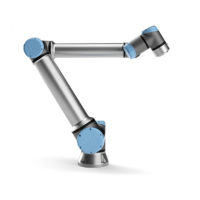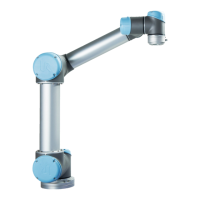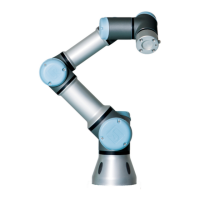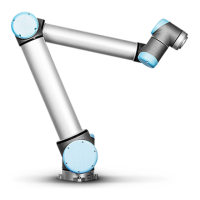2.10. Safety-related Functions and Interfaces
Description Universal Robots robots are equipped with a range of built-in safety functions as well
as safety I/O, digital and analog control signals to or from the electrical interface, to
connect to other machines and additional protective devices. Each safety function and
I/O is constructed according to EN ISO13849-1 (see Certifications) with Performance
Level d (PLd) using a category 3 architecture.
See 17 Software Safety Configurationon page137 in Part II PolyScope Manual, for
configuration of the safety functions, inputs and outputs in the user interface. See 17.7
Safety I/Oon page149 for descriptions on how to connect safety devices to I/O.
WARNING
The use of safety configuration parameters different from those
determined as necessary for risk reduction, can result in hazards that
are not reasonably eliminated, or risks that are not sufficiently
reduced.
•
Ensure tools and grippers are connected correctly to avoid
hazards due to interruption of power.
WARNING: ELECTRICITY
Programmer and/or wiring errors can cause the voltage to change
from 12V to 24V leading to fire damage to equipment.
•
Verify the use of 12V and proceed with caution.
Additional
Information
NOTICE
•
The use and configuration of safety functions and interfaces
must follow the risk assessment procedures for each robot
application. (see chapter section)
•
The stopping time should be taken into account as part of the
application risk assessment
•
If the robot detects a fault or violation in the safety system (e.g.
if one of the wires in the Emergency Stop circuit is cut or a
safety limit is exceeded), then a Stop Category 0 is initiated.
NOTICE
The end effector is not protected by the UR safety system. The
functioning of the end effector and/or connection cable is not
monitored
UR10e 28 User Manual
2.Safety
Copyright © 2009–2024 by UniversalRobotsA/S. All rights reserved.

